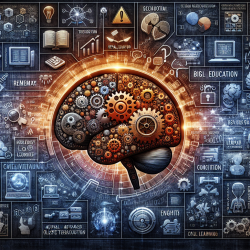As the field of mental health continues to evolve, the integration of technology into therapeutic practices has become increasingly significant. A recent study titled "Factors Associated With Intention and Use of e–Mental Health by Mental Health Counselors in General Practices: Web-Based Survey" offers valuable insights into the adoption and utilization of e-mental health (EMH) by mental health counselors (MHCs). This blog aims to distill the key findings of this research and provide actionable steps for practitioners to enhance their skills and embrace e-mental health solutions effectively.
Understanding the Research Findings
The study highlights several critical factors influencing the intention and actual use of EMH among MHCs:
- Perceived Usefulness and Benefits: The strongest predictor of intention to use EMH was the perceived usefulness and benefits. MHCs who see clear advantages in using EMH are more likely to adopt it.
- Task Perception: How well EMH fits into the MHC's role significantly impacts their intention to use it. If EMH is perceived as enhancing their professional tasks, adoption rates increase.
- Accessibility: Ease of access to EMH tools also plays a crucial role. MHCs need to find these tools readily available and user-friendly.
Additionally, the study found that the intention to use EMH and the perceived eligibility of patients for EMH are direct factors influencing its actual use. Patient eligibility, in turn, is determined by:
- Access to Technology: Patients need to have access to a computer and the internet.
- Motivation: Patient motivation to engage with EMH is essential.
- Language and Cognitive Skills: Adequate language proficiency and cognitive abilities are necessary for effective EMH use.
Actionable Steps for Practitioners
Based on these findings, here are some practical steps MHCs can take to improve their EMH implementation:
- Enhance Perceived Usefulness: Educate yourself and your colleagues about the tangible benefits of EMH. Share success stories and data on improved patient outcomes to build a strong case for its adoption.
- Align EMH with Professional Tasks: Identify how EMH can complement and enhance your current therapeutic practices. Integrate EMH tools that align well with your workflow and improve efficiency.
- Improve Accessibility: Choose EMH platforms that are easy to use and widely accessible. Ensure that both you and your patients have the necessary technical support and training to use these tools effectively.
- Assess Patient Eligibility: Evaluate your patients' access to technology, motivation, and language skills before recommending EMH. Provide additional support and resources to help them overcome any barriers.
- Stay Informed: Keep up with the latest research and developments in EMH through conferences, webinars, and publications. Continuous learning will help you stay ahead and make informed decisions about integrating new technologies into your practice.
Encouraging Further Research
While this study provides a solid foundation, ongoing research is essential to understand better the long-term impacts and best practices for EMH. Practitioners are encouraged to participate in research studies, share their experiences, and contribute to the growing body of knowledge in this field.
To read the original research paper, please follow this link: Factors Associated With Intention and Use of e–Mental Health by Mental Health Counselors in General Practices: Web-Based Survey.










